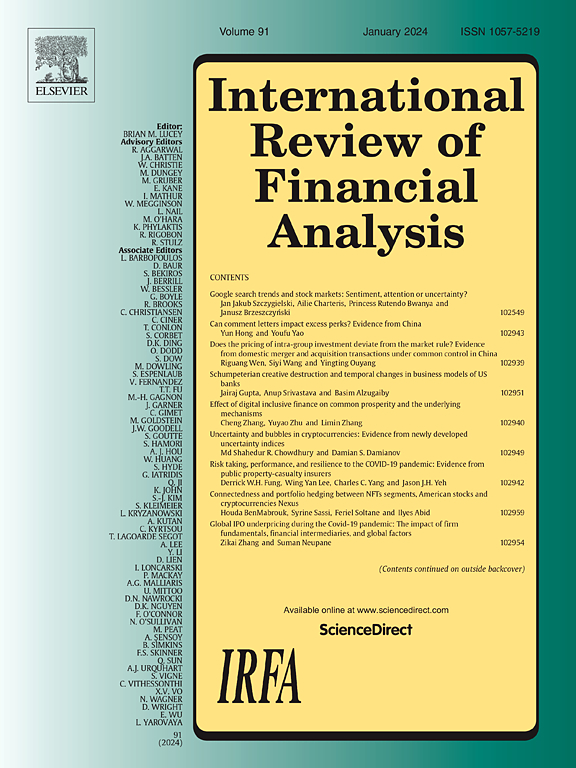分析艺术作为危机时期的避险资产
IF 7.5
1区 经济学
Q1 BUSINESS, FINANCE
引用次数: 0
摘要
本研究采用时变参数向量自回归(TVP-VAR)方法,考察了艺术品投资相对于传统金融资产的套期保值和避险特性,涵盖了多个金融危机时期(包括互联网泡沫破裂、全球金融危机和2019冠状病毒病大流行)的主要艺术品市场子指数。研究发现,艺术品指数在短期内与标普500指数表现出接近于零的相关性,这表明在没有避险特征的情况下,艺术品有可观的对冲收益。从中期到长期的角度来看,同样的相关性变得显著正相关,除了保持强大对冲效用的绘画和雕塑子指数外,这表明对冲效益正在减少。有趣的是,艺术品指数和黄金在所有被检查的时间和频率域中都显示出接近于零的关系,这表明存在独特的多样化机会。这些结果突出了艺术作为一种另类投资的作用,为其在金融危机期间加强投资组合多样化策略的潜力提供了见解。本文章由计算机程序翻译,如有差异,请以英文原文为准。
Analysing art as a safe-haven asset in times of crisis
This study investigates the hedging and safe-haven properties of art investments relative to traditional financial assets, employing a Time-Varying Parameter Vector Autoregression (TVP-VAR) approach across major art market sub-indices during several periods of financial crises, including the collapse of the dot-com bubble, the Global Financial Crisis, and the COVID-19 pandemic. Art indices are found to exhibit near-zero correlation with the S&P 500 in the short term, suggesting substantial hedging benefits without evidence of safe-haven characteristics. Over medium to long-term horizons, this same correlation becomes significantly positive, presenting evidence of diminishing hedging benefits with the exception of the painting and sculpture sub-indices, which maintain strong hedging utility. Interestingly, art indices and gold show a near-zero relationship across all examined time and frequency domains, pointing to the existence of unique diversification opportunities. These results highlight the role of art as an alternative investment, offering insights into its potential for enhancing portfolio diversification strategies during episodes of financial crises.
求助全文
通过发布文献求助,成功后即可免费获取论文全文。
去求助
来源期刊

International Review of Financial Analysis
BUSINESS, FINANCE-
CiteScore
10.30
自引率
9.80%
发文量
366
期刊介绍:
The International Review of Financial Analysis (IRFA) is an impartial refereed journal designed to serve as a platform for high-quality financial research. It welcomes a diverse range of financial research topics and maintains an unbiased selection process. While not limited to U.S.-centric subjects, IRFA, as its title suggests, is open to valuable research contributions from around the world.
 求助内容:
求助内容: 应助结果提醒方式:
应助结果提醒方式:


